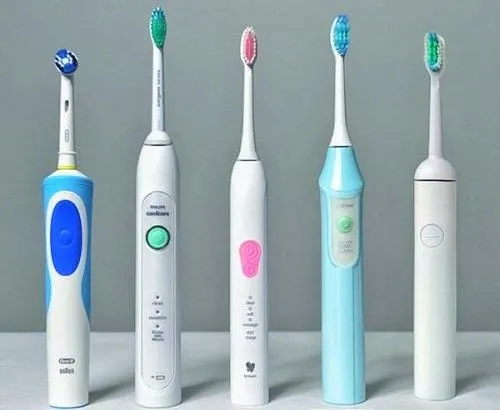The cleaning of ordinary manual toothbrushes is to gradually remove large pieces of food residues remaining on the surface of the teeth through repeated gentle force of the hand.
Electric toothbrushes are divided into two categories: rotary electric toothbrushes and sonic vibration electric toothbrushes.

Rotary electric toothbrushes rely on the mechanical friction of the high-speed rotation of the brush head to clean the teeth; sonic vibration electric toothbrushes use the ultrasonic transducer in the brush head to make the brush head vibrate at high frequency to loosen the plaque and tartar on the tooth surface. until cleared.
The biggest difference between electric toothbrushes and manual toothbrushes is that the former can help us clean our teeth more efficiently and cooperate with the fast-paced work and life of modern people! An excellent electric toothbrush can effectively protect the periodontal soft tissue while cleaning teeth more efficiently.
How to choose between ordinary toothbrush and electric toothbrush?
1. Children's hands are not flexible enough before the age of 12, and it is difficult to master the correct brushing method. It is recommended to use an electric toothbrush, preferably a children's model.
2. People with disabilities who can control brushing tools, or adults with inflexible hands, are recommended to use electric toothbrushes.
3. For busy office workers, it is recommended to use an electric toothbrush, which can effectively save time.
For anyone who can master the Pasteur brushing method, a manual toothbrush can be used. As long as the brushing method is correct and the time is sufficient, the cleaning effect of electric and manual toothbrushes is the same.
It should be reminded that people who suffer from serious oral diseases or are in the treatment of oral diseases are recommended to use manual toothbrushes.
How to choose when buying a toothbrush?
Regular toothbrush:
Be sure to choose regular products. It is recommended to choose micro-core wire bristles. The tips of the bristles must be "rounded" to avoid damage to oral tissues such as teeth and periodontals.
The size of the brush head needs to be able to reach the deep teeth of the mouth.
People with healthy teeth are recommended to choose bristles with general hardness; while people with sensitive and fragile oral tissues such as children, pregnant women, and patients with periodontitis are recommended to choose soft-bristled toothbrushes.
Prev:What do you know about the role of the hair removal device?
Next:What does a toothbrush do?